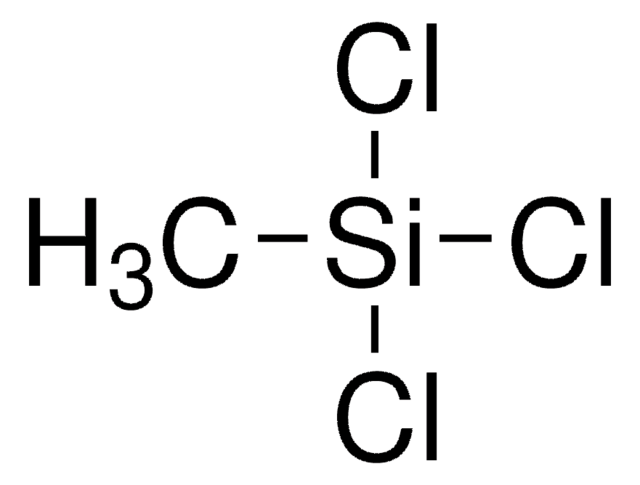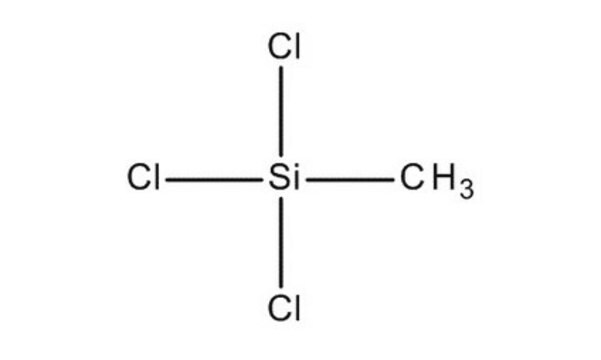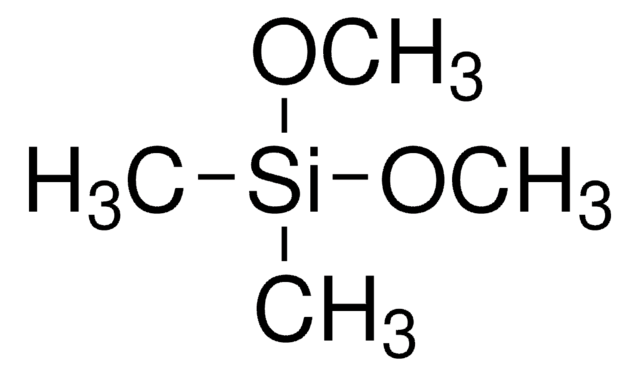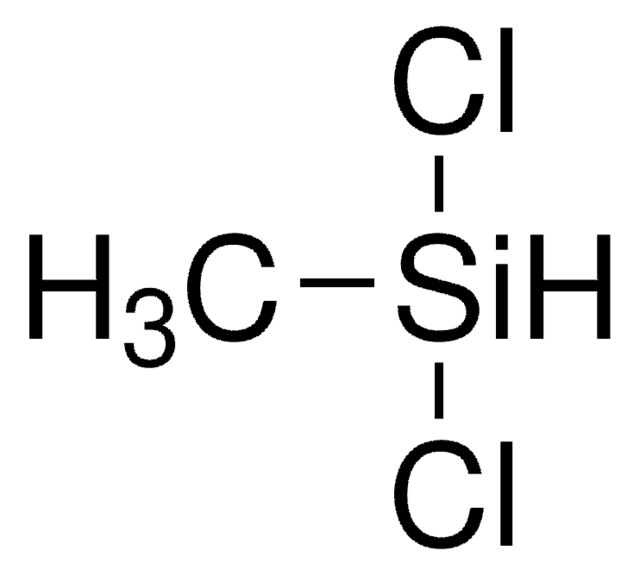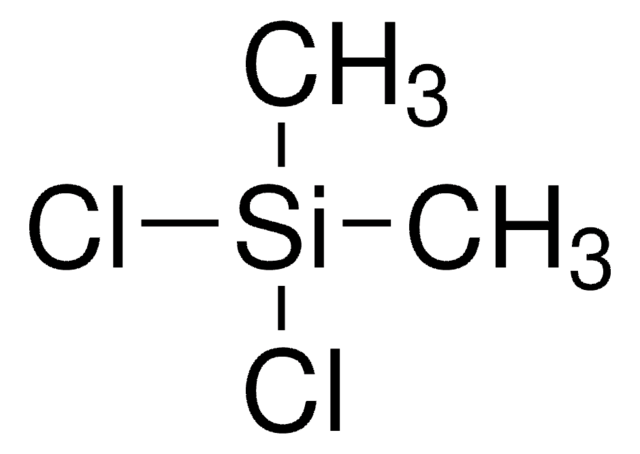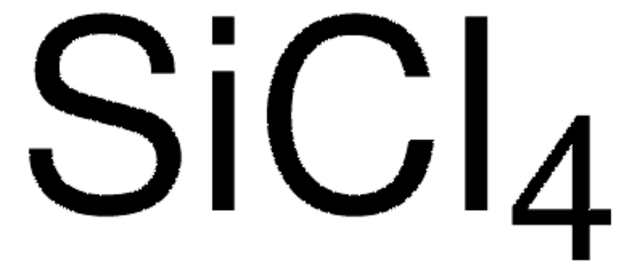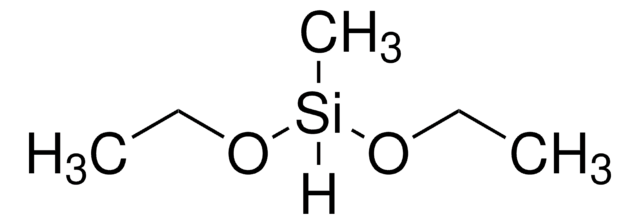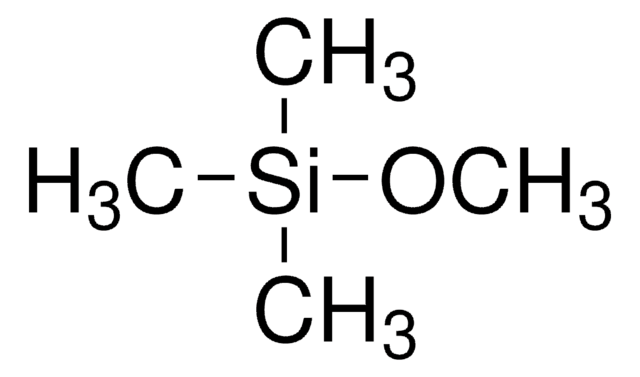679208
Methyltrichlorosilane
deposition grade, ≥98% (GC), ≥99.99% (as metals)
Sinonimo/i:
Trichloro(methyl)silane
About This Item
Prodotti consigliati
Grado
deposition grade
Livello qualitativo
Densità del vapore
5.2 (vs air)
Tensione di vapore
150 mmHg ( 25 °C)
Saggio
≥98% (GC)
≥99.99% (as metals)
Stato
liquid
Temp. autoaccensione
>760 °F
Limite di esplosione
11.9 %
Indice di rifrazione
n20/D 1.411 (lit.)
P. ebollizione
66 °C (lit.)
Densità
1.273 g/mL at 25 °C (lit.)
Stringa SMILE
C[Si](Cl)(Cl)Cl
InChI
1S/CH3Cl3Si/c1-5(2,3)4/h1H3
JLUFWMXJHAVVNN-UHFFFAOYSA-N
Cerchi prodotti simili? Visita Guida al confronto tra prodotti
Avvertenze
Danger
Indicazioni di pericolo
Classi di pericolo
Acute Tox. 3 Inhalation - Acute Tox. 4 Dermal - Acute Tox. 4 Oral - Eye Dam. 1 - Flam. Liq. 2 - Skin Corr. 1A - STOT SE 3
Organi bersaglio
Respiratory system
Codice della classe di stoccaggio
3 - Flammable liquids
Classe di pericolosità dell'acqua (WGK)
WGK 1
Punto d’infiammabilità (°F)
46.4 °F - closed cup
Punto d’infiammabilità (°C)
8 °C - closed cup
Scegli una delle versioni più recenti:
Possiedi già questo prodotto?
I documenti relativi ai prodotti acquistati recentemente sono disponibili nell’Archivio dei documenti.
Articoli
Deposition Grade Silanes, fully characterized by chemical analysis and nuclear magnetic resonance (NMR) with greater than 98% purity, for Sol-Gel Processes.
atomic layer deposition (ALD), microelectronics, Mo:Al2O3 films, nanocomposite coating, photovoltaics, semiconductor devices, W:Al2O3 films, composite films, layer-by-layer
Silica is a very popular inorganic nanomaterial used in a wide range of applications including fillers for rubber, catalyst supports, separation media, carriers in food and agriculture, and abrasive/anticaking agents in cosmetics. It is also widely believed to be an important material for biomedical applications for following reasons.
Il team dei nostri ricercatori vanta grande esperienza in tutte le aree della ricerca quali Life Science, scienza dei materiali, sintesi chimica, cromatografia, discipline analitiche, ecc..
Contatta l'Assistenza Tecnica.